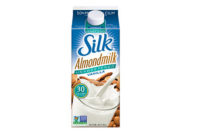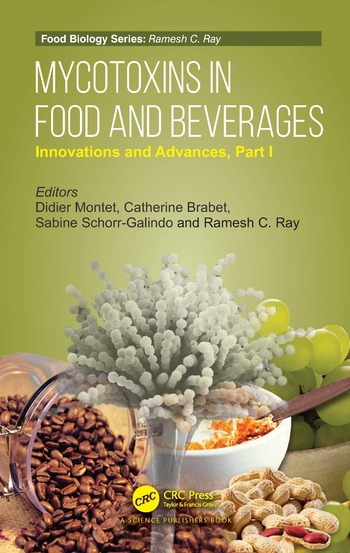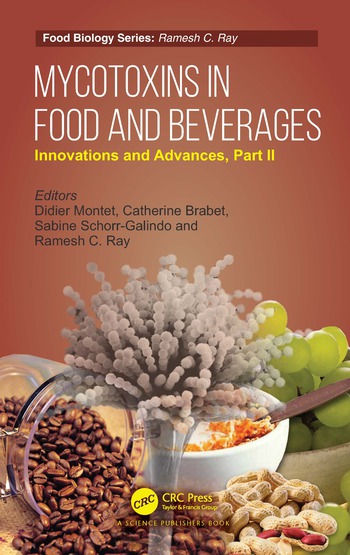Citrus blends in beverages will trend next year
Citrus ingredients impacted by consumer demands and environmental challenges

Lemonade is one of the most active and fastest-growing product development categories, according to Virginia Dare’s Anton Angelich. (Image courtesy of Zola)

Although lemon and lime flavors are popular, orange takes the lead in the beverage industry, says Marlena McGuffey of Flavorman. (Image courtesy of Sunny Delight Beverages Co.)

Blending classic citrus fruits like lemon with exotic citrus fruits like yuzu offers a familiar taste experience with an exciting twist, says Phil Houillion with Mother Murphy’s Laboratories. (Image courtesy of B&R Liquid Adventure LLC)



Citrus flavors have long been popular among U.S. consumers, whether the flavors appear in an orange soda or Key Lime pie. Within the beverage industry in particular, citrus is the most-popular flavor category, according to Teresa Olah, marketing director of beverages in North America for Hoffman Estates, Ill.-based Sensient Flavors, a part of Sensient Technologies Corp.
Exemplifying this statement, respondents of Beverage Industry’s 2013 New Product Development Survey, which was published in the January 2014 issue, set high expectations for lemon flavors in new beverage launches during 2014, putting lemon in the Top 3 of the most-anticipated top-selling flavors for the year.
Trendy fruits
With summer now upon us, lemon is making its timely appearance in the form of lemonade. Currently, lemonade is one of the most active and fastest-growing product development categories, says Anton Angelich, group vice president of marketing for Virginia Dare, Brooklyn, N.Y. “Lemonade has a universally popular taste approval in this country,” he says. Plus, tea-and-lemonade as well as fruit-and-lemonade combinations are spicing up the segment, he notes. In addition to tea, lemonade also is being utilized in other beverage categories, such as beer, notes Betty Honaker, finance director for Rocket Products Inc., Fenton, Mo.
In general, citrus flavors often experience a spike in popularity because of warm weather, notes Victoria Vaynberger, marketing and consumer insights manager for David Michael & Co., Philadelphia. Consumers generally view citrus-flavored beverages as refreshing options during the summer months, she explains.
While the summer season continues to boost the usage of citrus flavors in beverages, the growing Hispanic population in the United States also is driving demand, says Michael Falkenberg, category director for beverages at Symrise Inc., Teterboro, N.J. By 2050, Hispanics will make up nearly one-third of the U.S. population, according to the Pew Research Center, Washington, D.C. Thus, demand for lime-flavored beverages is growing, Falkenberg says.
Despite the popularity of lemon and lime flavors, orange takes the lead when it comes to beverages, says Marlena McGuffey, manager of product development for Flavorman, Louisville, Ky. “This flavor seems to be embedded in our DNA and offers comfort and familiarity that keeps us coming back,” she says. Even though industry trends are always shifting, this consumer need for familiarity never seems to change, she adds.
“People seem to be more willing to try a product that is unusual if it contains at least one item that is familiar,” McGuffey says. “… Regardless of the trends we have seen over the years, flavors seem to always come back to the basics: oranges, lemons, limes, ginger ales, etc.”
Adding polarity to this trend, exotic citrus fruits also are gaining ground, according to ingredient suppliers.
“The mainstreams continue to be the most popular citrus flavors, [including] orange, lemon, lime and grapefruit; however, exotic citrus flavors are providing an opportunity to reinvigorate this category with new experiences and storytelling,” Sensient Flavors’ Olah says. For instance, the company named burnt calamansi as one of its 2014 flavor trends. “This citrus flavor may be exotic by name, but it provides a familiar taste experience with a flavor that is often described as a cross between a mandarin and a lime.”
Likewise, David Michael & Co.’s Vaynberger says she expects calamansi to gain traction in the next couple of years.
Another exotic citrus flavor expected to rise in popularity is bergamot, according to Joe Raimondo, president of Artiste, Glen Rock, N.J. Bergamot has been a key ingredient in fragrance development, but it is fast becoming a sought-after and valuable ingredient for flavor developers — particularly when it comes to beverage applications, he says.
“The uniquely appealing properties of natural bergamot oil and organic bergamot oil make it a key ingredient in a wide variety of products,” Raimondo said in a statement. “Bergamot, a hybrid of uncertain origin, has many different and unique flavor profiles that vary from each place of origin from around the world. It’s not the kind of citrus used in fresh-squeezed citrus juices, yet when blended with hot and cold teas, sweet confections, syrups, iced beverages and spirits, bergamot adds a surprising tangy, slightly herbal and different citrus flavor that is very appealing.
“Year by year, we are experiencing an increasing level of requests for bergamot oil, mainly for flavoring teas and the development of unique beverage profiles,” Raimondo continued.
Sensient Flavors’ Olah also notes that the company has noticed an increase in requests for Sicilian lemon. She adds that hybrid fruits, such as Meyer lemon, Tangelo and Pomelo, already have begun to appear in consumer products. In the future, the company expects new hybrids, such as the blood lime, which is a hybrid of a hybrid, to hit the market, she says.
Other popular citrus varietals include finger lime, tangerine, clementine and blood orange, David Michael & Co.’s Vaynberger adds. These specific citrus varietals add a level of sophistication to beverages, bringing them up to “the next level of purity, the next level of better ingredients, the next level of something special,” Symrise’s Falkenberg says.
Mix and match
Next year, the big trend in citrus will be flavor combination, says Wolfgang Boehmer, business development manager for Flavor Dynamics Inc., South Plainfield, N.J. Such blends might include orange-strawberry, tangerine-mango or papaya-grapefruit, he notes. This trend won’t come at the expense of the classic citrus flavors, however, says Phil Houillion, senior flavorist for Mother Murphy’s Laboratories, Greensboro, N.C.
“The basic citrus flavors will continue, but blending will increase in popularity by taking a known citrus flavor, [such as] lime, and blending it with another known [fruit, such as] strawberry or cranberry, and/or blending … with a more exotic citrus flavor, [such as] yuzu, mango, jackfruit, etc.,” Houillion says. “This is a great way to add an exciting twist to a product but still keep it familiar so a consumer feels comfortable purchasing.”
Additionally, blending gives beverage-makers the chance to appeal to consumers who favor berry flavors as well as those who prefer citrus flavors, Flavorman’s McGuffey says.
“Most beverage developers are aware that consumers are generally divided between citrus and non-citrus products,” she explains. “It is not to say that a consumer cannot like both, but generally there is a preference of one over the other. If a beverage company is going to produce two SKUs to put on the shelves, then its best bet is to appeal to both crowds. Another great way to bring the two groups together is by pairing the citrus and berry flavors together.”
The blending trend doesn’t only include non-citrus fruit flavors; it also includes vegetable juices, Virginia Dare’s Angelich notes. For instance, kale is a popular green vegetable that blends well with orange, mandarin and tangerine flavors, he says.
“To make something hedonically pleasing and something consumable, you take something like orange or strawberry that has a very wide appeal and you add it to some vegetable blend, and now it becomes much more drinkable,” Angelich says.
Coming clean
However, the demand for authenticity trumps all other trends, according to ingredient suppliers.
“We are seeing an increase in the number of brands choosing to clearly communicate the source of the main ingredients on the finished product, as shoppers show an increased interest in knowing where the foods and drinks they consume are from,” says Douglas Rash, group vice president of global sales for Treatt, Lakeland, Fla.
To meet this demand, the company released a range of new TreattZest citrus oils that offer an authentic, fresh, zesty flavor profile, the company says. The From the Named Fruit (FTNF) lineup encompasses such citrus oils as Expressed Lime Oil Tahiti, Lemon Sicilian Cold Pressed, Lime Distilled, Lemon Essence, Orange Cold Pressed, Lemon Juicy and Lemon Cold Pressed.
“These highly concentrated oils capture authentic, true-to-fruit profiles which can be used on their own or with other ingredients to create signature flavor systems,” he adds.
For beverage-makers, authenticity and transparency are important factors when selecting ingredients and relaying them to shoppers via labels, Symrise’s Falkenberg notes. However, this does not necessarily translate to a 100 percent organic claim. According to Virginia Dare’s Angelich, the majority of its customers who are seeking organic ingredients are satisfied with “organic” labeling instead of “100 percent organic” labeling. This means that up to 5 percent of the beverage can be composed of approved non-organic ingredients from the U.S. Food and Drug Administration’s national list of allowed and prohibited substances. Typically, flavor sources will fall into this 5 percent, because this is the best option for getting the product to market as quickly as possible, Angelich explains.
From the consumer standpoint, shoppers are more interested in clearly seeing a natural flavor or extract on a beverage label, Symrise’s Falkenberg says.
As a result of consumers seeking transparent, “clean” labels, beverages containing FTNF citrus flavors will be more popular in the future, says Philip Barone Jr., director of flavor development for California Custom Fruits and Flavors Inc. (CCFF), Irwindale, Calif.
For example, a lemon-lime carbonated juice drink containing FTNF flavors could state “natural lemon-lime flavor” on its label, he explains. “In order to make this flavor claim, all ingredients used in the flavor must have come directly from lemons and limes,” he says.
However, this consumer demand could become too difficult to meet because of challenging environmental circumstances.
Supply falling short
The increase of consumers demanding natural, authentic ingredients and clean labels has led to an imbalance between the supply of citrus ingredients from Mother Nature and growing demand, Sensient Flavors’ Olah says.
“The consumer obsession with ingredients from nature needs to evolve to a ‘meet-in-the-middle’ solution between what nature can provide and what can be developed in a lab,” she says. “This trend is affecting all natural ingredients, but citrus is at the forefront due to the diminishing supply [that citrus] greening disease has created.”
Citrus greening has hit citrus growers in Florida quite hard, CCFF’s Barone notes. Caused by bacteria transported by a type of insect, citrus greening destroys citrus tree production and eventually kills the tree, explains George Ennis, chief flavor chemist for David Michael & Co. “There is no known cure yet for the disease, but some research is being done to genetically modify orange trees,” he says. “Samples are showing promise of resistance to the bacteria that was identified in the United States in 1995.”
Until a solution is found, the disease will impact typical supply and demand, which will lead to higher prices for citrus oils and flavors, Ennis says. Already, the cost of orange and lemon oils and juices has increased between 30 and 50 percent, CCFF’s Barone says.
However, flavor chemists have an opportunity to work around this challenge by innovating, using their existing ranges of ingredients, and creating new citrus flavor profiles, David Michael & Co.’s Ennis says.
For instance, some citrus oil manufacturers are working to extend their supplies by adding natural flavors to the essential oils, Mother Murphy’s Houillion says. These compounded oils then become With Other Natural Flavors (WONF). “The idea here is to keep the flavor profile the same and use mostly the essential oil, but extend it with other essential oils or natural flavoring components,” he explains.
Additionally, some beverage manufacturers are turning more to sweeteners than citrus fruits to control bitterness in a product while reducing the need for citrus, Rocket Products’ Honaker says.
Flavors for stability
Just as marketing campaigns support the sale of a brand, citrus flavors play a supporting role to juices on the retail shelf. Many beverages contain both juice and citrus flavoring in order to produce a consistent, stable product, according to ingredient suppliers.
“A flavor is predictable — it’s going to tell you what the product’s going to taste like, and when you don’t use flavors, you may have the fluctuations of agriculture,” says Anton Angelich, group vice president of marketing for Virginia Dare, Brooklyn, N.Y.
However, flavors also can be used without juice in some beverage categories. In these cases, flavors can offer formulation advantages because of their stability, suppliers note. In particular, flavors are more stable against heat and ultraviolet light than juices, says George Ennis, chief flavor chemist with David Michael & Co., Philadelphia. They’re also ideal for clear beverages, because they do not make the liquid cloudy or leave sediment behind, adds Phil Houillion, senior flavorist with Mother Murphy’s Laboratories, Greensboro, N.C.
Additionally, a significant advantage of flavors is that they don’t tend to oxidize as heavily as juices do, says Michael Falkenberg, category director for beverages at Symrise Inc., Teterboro, N.J.
“Lemon, for instance, contains a big part of the chemical called citral, so that’s in every lemon juice and every lime juice,” he says. “As soon as you expose citral to oxygen and light, there is heavy degradation.” Flavors are not as vulnerable to this, he says. As a result, flavors can offer long-term stability on the shelf, he adds. However, the flavor must be labeled on the beverage accordingly, he notes.
Looking for a reprint of this article?
From high-res PDFs to custom plaques, order your copy today!












